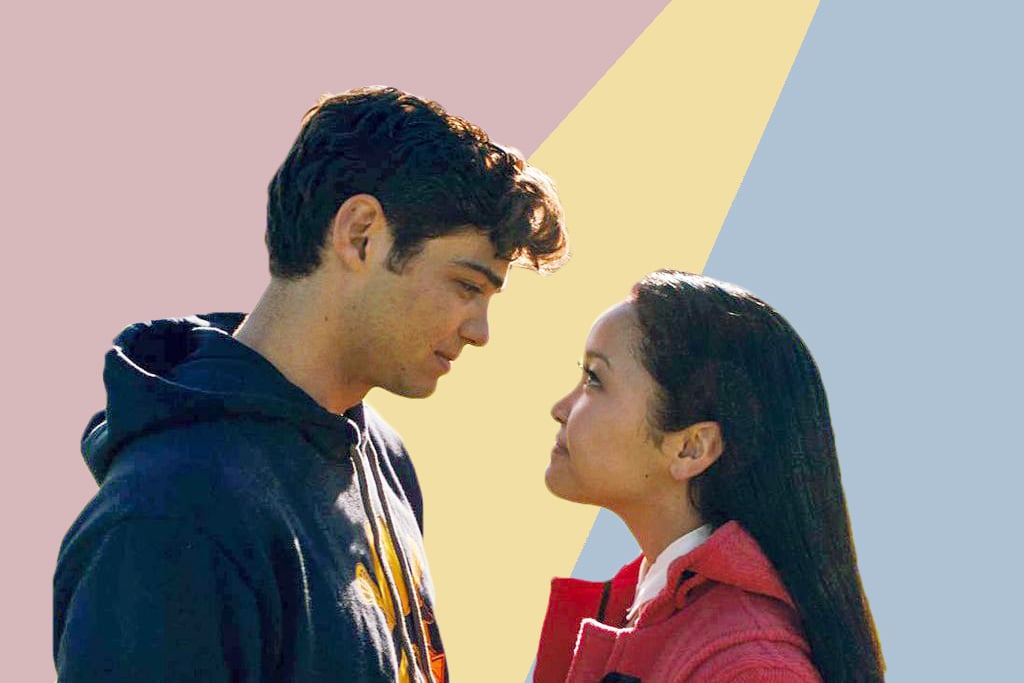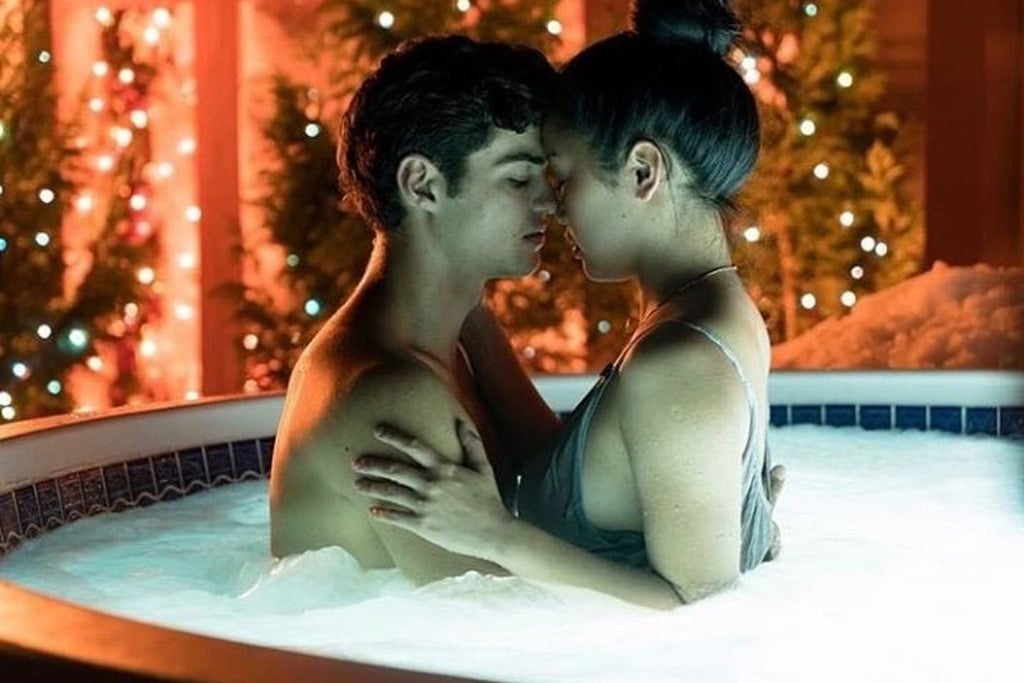How ‘To All The Boys I’ve Loved Before’ Fixed The Fake Dating Trope
'To All The Boys' brought the fake dating trope into 2018 and made it progressive as fuck.

To All The Boys I’ve Loved Before is Netflix’s latest teen rom-com and the internet has unanimously crowned it the golden child of the streaming service’s original films. And for good reason. The film is everything your 15-year-old self wanted in a teen movie. Warning: Spoilers ahead.
The film is about the terrifying prospect of your crushes suddenly knowing every intimate detail about your emotional thirst for them.
That’s what happens to Lara Jean — five letters she’s written get sent to her five crushes, notably including her sister’s ex-boyfriend, Josh, and one to a boy she kissed in seventh grade, who is best known by his full name, Peter Kavinsky.
Lara Jean must convince Josh that she no longer has a crush on him, so as to not upset her sister, and Peter becomes part of the plan.
The brilliant premise allows the film to lean in to all of the best rom-com tropes: we’ve got love interests who live next door to each other, forbidden love, love triangles, and a perfect supportive single dad in John Corbett.
But there’s one trope that rises above the rest, a trope so ubiquitous to the rom-com category that it didn’t seem possible that there was a fresh take on it. But that’s why To All The Boys I’ve Loved Before is so special — it brought the fake dating trope into 2018 and made it progressive as fuck.
So What Even Is Fake Dating?
Fake Dating is one of the best pop-culture tropes of all time — it’s been used in everything from The Hunger Games to The Proposal and even an episode of Frasier.
to all the boys i’ve loved before and the proposal are prime examples of why fake dating to fr falling in love are the best romance storylines
— mari (@chbellamy) August 25, 2018
At its core, the trope sees two characters pretend they’re dating in order to raise their social status or get a green card, or you know, convince the whole of Panem that they should win The Hunger Games and not be murdered by their autocratic state. But the key to the trope is that by going through the motions of ‘dating’ the characters are able to be vulnerable with each other and eventually fall in love.
Of course, like most rom-com tropes, this one often promotes unhealthy habits within the relationship. Neither character truly knows what they’re signing up for, nor do they really know where the other character is at emotionally, and mostly there’s just a lot of heartbreak and pent up sexual frustration.
But that’s where To All The Boys I’ve Loved Before sets itself apart. It takes the trope, breaks it down and builds it back up to show how a somewhat trivial trope can be the unexpected cornerstone for a respectful relationship built on honest communication between two very beautiful individuals.
so you all telling my to all the boys i’ve loved before has fake dating??? my god my 13 year old self is having a stroke right now pic.twitter.com/eq697qV3eH
— nica (@wildnamgi) August 18, 2018
Hooray For Progressive Teen Films!
One possibly wouldn’t expect a teen rom-com to be built on the value of consent, but To All The Boys I’ve Loved Before actually is.
Lara Jean and Peter Kavinsky start their fake relationship in the most consensual way possible! With a literal pen and paper contract — Rousseau would be so proud! Together they formalise the do’s and don’ts of their fake relationship, compromising on certain things (Lara Jean will go to Peter’s lacrosse games if he drives her and her sister to school every day) and standing firm on others (no kissing).
Both parties have equal input in the negotiation and are comfortable with what they’ve agreed to, which allows the (fake) relationship to start on the right foot.
Honest Communication
Open and honest communication is key in a real relationship, but in fake relationships hardly an honest word is spoken.
Take Drive Me Crazy for example: throughout the film Melissa Joan Hart spends more time thinking about what Adrian Grenier should be wearing during their fake relationship, than speaking about her feelings. Hell, in The Hunger Games Katniss and Peeta spend the majority of the film apart before they decide on a suicide pact.
Not really the stuff of a healthy relationship.
The most relatable thing about to all the boys I’ve loved before is when Lara Jean jumps out of a second story window to avoid talking to someone at the door
— Alisha Rai (@AlishaRai) August 27, 2018
But in To All The Boys I’ve Loved Before, fake dating brings Lara Jean and Peter closer together. It seems as though they can talk about anything. Lara Jean shares what it’s like to lose her mum and even tries to help Peter understand his feelings about his dad leaving and starting a new family.
What’s even more surprising is that Peter can be honest about his feelings for Gen, and if it wasn’t for Josh (ugh) he would have been able to explain why he was in Gen’s room a whole lot earlier. Truly, have you ever seen two teenagers communicate so well? I don’t think I’m that honest with my dog. It might not be in the contract, but supporting each other comes naturally to Lara Jean and Peter, so the question becomes, if they’re caring and providing support for one another, aren’t they… dating already?
Female Agency in the Relationship
Fake Dating has an evil twin trope called The Bet.
The Bet is best remembered in 10 Things I Hate About You or She’s All That, where the woman has no idea that the relationship they think is real is actually the result of a bro-y bet. It leaves the female protagonist completely in the dark about the relationship, basically stripping her of all agency.
These films are in stark contrast to To All The Boys I’ve Loved Before, where although Lara Jean has no control over the letters finding their way into the hands of her five crushes, she has almost complete control over how she handles her fake relationship.
is it possible to watch ‘to all the boys i’ve loved before’ and not fall in love with peter kavinsky? i’m asking for a friend. pic.twitter.com/lurYv0qMHn
— Fashion & Pop Culture (@postbestfshn) August 27, 2018
For starters, Peter is the one who floats the idea of fake dating, but it isn’t until Lara Jean realises it’s in her best interests that she agrees. We’ve already covered the fake relationship contract, but that is also a product of Lara Jean, put into place so that she feels comfortable in the relationship. She also decides ‘no kissing’ should be part of the agreement, and although Peter thinks this will make their relationship less believable, she gives an eloquent explanation as to why she doesn’t want all her firsts to be fake and that’s that.
Ultimately, kissing in the spa is also her decision, though after seeing Peter’s face and witnessing that flirtatious splash, I don’t really know what other option she had. It’s so rare in a teen rom-com to see a woman make her own decisions about intimacy, it’s a pretty awesome example to set for the millions of teens who get to re-watch this film over and over again.
We can all learn a lot about relationships and open communication from To All The Boys I’ve Loved Before. Unfortunately, we probably can’t learn how to do that hand-in-back-pocket-then-spin-her-around thing they do at the cafeteria, because that was the most beautiful display of affection I’ve ever seen, and it should never be replicated.
Let’s talk about this scene. Fun fact: this was all Noah. He improvised not only the iconic popcorn moving scene, but this back pocket spin too. 💞 pic.twitter.com/OETuUc4lW7
— To All The Boys I’ve Loved Before (@alltheboysfilm) August 27, 2018
You can watch To All The Boys I’ve Loved Before on Netflix now.
—
Chloe writes for Junkee and has set her iPhone wallpaper to a photo of Noah Centineo aka Peter Kavinsky.
